Inside the Director's Toy Box: An Interview with Hiroshi Nagahama at Animazement 2025
by Coop Bicknell,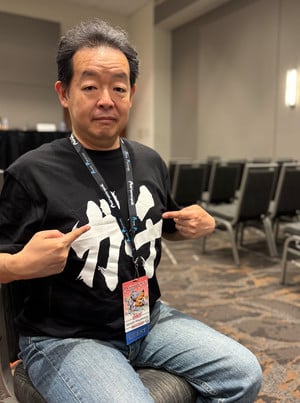
But at this year's Animazement, Mr. Nagahama arrived in Raleigh with his whole toy box in tow—literally. Even though his first panel was listed on the schedule as a standard Q&A session, he quickly set up his laptop's webcam and started displaying his favorite superhero figures of the '80s and '90s. However, Mr. Nagahama wasn't solely playing show-and-tell—he used this rare opportunity to present these gimmick-filled, highly articulated, and often quirky toys as an analogy for how he works as an anime director.
As a kid, he'd been disappointed by the relatively limited articulation of the sofubi [soft vinyl] Ultraman and Kamen Rider figures he came across. But around 1984, he had a chance encounter with a Superman from Kenner's Super Powers toy line. The figure's level of poseability and memorable gimmicks unlocked a whole new world for him. Krypton's last son then had him thinking about the power of a strong pose and the freedom of movement afforded by the human body. In Nagahama's own words, this was the starting point of his career as an animator.
In the years that followed, if he'd nab the occasionally funky-looking Toy Biz Spider-Man figure, he could appreciate what made it unique—he feels the same way about anime. Nagahama also spoke on how action figure playsets tend to fill in details about certain characters, using that framework to break down the design process that led to the birdcage iconography of Anthy's Rose Garden in Revolutionary Girl Utena.
When we sat down the following morning for an extended interview, it was almost as if we were a pair of professional fans champing at the bit to talk shop. We excitedly spoke about the many titles he's worked on over the years, his love of superhero figures, and the interplay between his passions. However, we weren't the only fans in the room, as North American anime community pioneer and Animag alumni Takayuki Karahashi joined the conversation as our interpreter.

While looking through the list of American conventions you've attended, I noticed that Animazement has become something of a “home convention” for you in recent years. What is it about North Carolina and the show itself that keeps you coming back?
Hiroshi Nagahama: I think it is all about the fans. And as for myself, I'm a big fan of American comics, and I love the United States. If I had the opportunity, I'd love to visit every single city. However, one thing about North Carolina is that you hear almost nothing about it in Japan. Until I came here, I wasn't familiar with the state's cities and landscapes. Once you come and see the rich nature, the abundance of museums, and all the universities, you realize that North Carolina has a rich culture. It's quite an attraction. But especially here at Animazement, you'll see North Carolinian fans embrace not only Japanese manga and anime, but also other Japanese cultural aspects such as music and stage choreography. Y'know, this is the kind of place you never turn down an invitation to visit.
Speaking of North Carolina, I can't help but picture Ginko wandering his way through the Appalachian Mountains and the state's forests. Which brings me to Mushi-Shi; what is it about the series that made you say “yes” whenever a new proposal came through the door?
NAGAHAMA: I've been a fan of the Mushi-Shi manga since I first read it. I knew I was the only person capable of turning it into anime, but at that point, I'd never directed an animated series, so I was full of fearless confidence. That was exactly when I got an offer asking if I'd be interested in directing another anime that wasn't Mushi-Shi. However, I'd resolved to make Mushi-Shi my directorial debut, so I turned down that offer. I made a pitch for Mushi-Shi and took it to the publisher, Kodansha. I talked to a producer and made the proposal. The editor at Kodansha's Monthly Afternoon then told me, “It's a go, but you still need the okay from the author, Yuki Urushibara. If she gives an 'okay,' it's a go.” So, I ended up talking to her, and it came to be!
May I ask you about the closing of Artland [the studio behind Mushi-Shi]?
NAGAHAMA: Yes, go ahead.
What was going through your mind when you learned the studio was closing down? My heart was shattered as a fan of the studio and [Noboru] Ishiguro-san's works like Macross and Megazone 23, but I can't even begin to imagine what that might've felt like for someone who worked with those folks.
NAGAHAMA: It was very sad. However, when Artland folded, Noboru Ishiguro had already passed away. So, even if Artland were to continue without its founder, I had the sense that it would no longer be quite the same Artland—the one that made titles such as Macross and Megazone 23. I was sad to hear of its closing, but I also thought that change was inevitable — a part of the passage of time and changing eras.
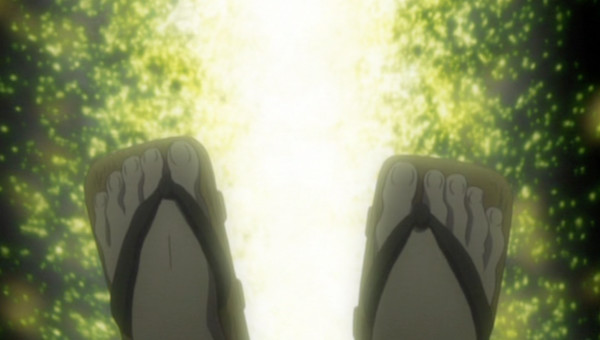
At Otakon last year, you shared the story of that fateful night you and your friends watched Wicked City for the first time. Once you got your foot in the door at MADHOUSE, how did your perception of anime shift as someone who went from marveling at a cut as a viewer to becoming the guy responsible for animating said cut?
NAGAHAMA: I may have shifted to working where I was in animation, but I was so busy completing every task given to me. I didn't have a chance to step back and take an objective view of my changing attitudes or perspectives. I went and asked for a job at MADHOUSE, and the director of Wicked City, Yoshiaki Kawajiri, was there. He was a terrifying man, but I'm not saying that he was a violent or threatening man. He just had a very impressive aura about himself. As a new employee, I strived for Kawajiri to notice my name and give me a little bit of praise for my in-between [work]. I believe that if animators who are just getting started can concentrate on the tasks given to them, their efforts will bear fruit.
On the topic of career shifts, I wanted to ask you a bit about another one of your early works, Jubei-Chan 2—a series I remember enjoying as a kid.
NAGAHAMA: Thank you.
By that point, you'd worked as an episode director, key animator, and conceptual designer, but what was it like overseeing an entire series for the first time? Were there any unique challenges that arose given that Jubei-Chan 2 is also a sequel?
NAGAHAMA: When the creator and director of the original Jubei-chan series, Akitarō Daichi, tapped me to work on the sequel, I told him, “If it's going to be the same main staff as the first Jubei-chan, then I'll do it.” But it turned out that Jubei-Chan 2's production schedule wouldn't allow the original character designer, [Takahiro] Yoshimatsu, to join us. So, Akitarō Daichi asked me, “Instead of Yoshimatsu, would it be possible for us to use Yoshihiko Umakoshi, known for Ojamajo Doremi, as the character designer?” I told Daichi, “There would be no Jubei-chan without Yoshimatsu, so you shouldn't do Jubei-Chan 2.” That's when Yoshimatsu took us out for a drink, and he was the one who told me, “I want to see a Jubei-chan made by you—Nagahama—and Umakoshi.” Then Umakoshi and I said, “Let's give it a try,” and that's how the second series happened. Thanks to that start, I've been able to team up with him since then. My directorial debut, Mushi-Shi, was made possible with Umakoshi. I am very grateful to Daichi and Yoshimatsu for allowing me to get to know a great talent.
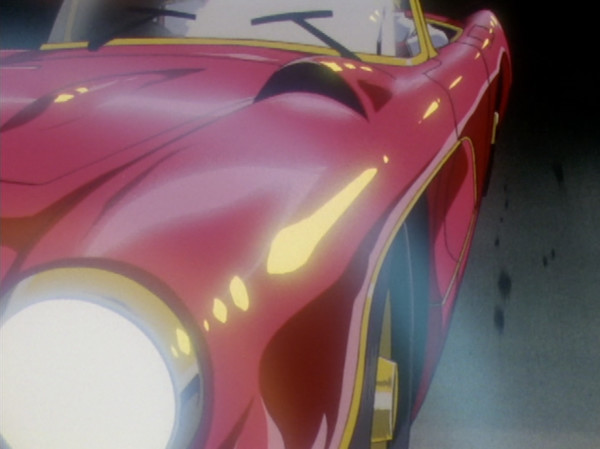
I'd just mentioned your work as a conceptual designer, so let's talk a little Revolutionary Girl Utena. While reading through your interview included with the North American DVDs, I noticed that it specifically referred to Akio's car as a “Corvette.” Given the car's red paint, the sexual imagery surrounding it, and the regular talk of princes, I have to ask: did the music icon Prince inspire the car's design and other elements of Utena? I can't stop hearing “Little Red Corvette” in my head whenever I see Akio's car on-screen.
NAGAHAMA: It would be great if that were the case! Unfortunately, that's not the backstory behind it. To settle on Akio's car, Director [Kunihiko] Ikuhara and I went to look at cars in a miniature car shop. Ikuhara originally wanted a Jaguar, so we looked for a model that most resembled one and would be appropriate as Akio's car. But instead, we stumbled upon a Corvette, and I believe it was a silver Corvette. Ikuhara and I said to each other, “This looks like an 'Akio car.'” Then he said, “This Corvette very much resembles my initial ideas for Akio's car.” Well, this is what's funny about the man: a Corvette is not a Jaguar. But Ikuhara kept on insisting that this particular Corvette was exactly the “Jaguar” he'd envisioned. Ikuhara has the mind of a trickster, and I believe it's that kind of genius that sustains Utena as a long-beloved show.
While working alongside Ikuhara-san and [Shichirō] Kobayashi-san on Adolescence of Utena, were there any specific artists or inspirations you looked to while crafting its vision of Ohtori Academy? A close friend of mine is an art buff, and the film's imagery reminded them of early 20th-century surrealist artists like Yves Tanguy, René Magritte, Max Ernst, and M.C. Escher.
NAGAHAMA: If anyone gets that impression, that would be the singular result of art director Shichirō Kobayashi's talent. If my memory serves me right, Ikuhara and I had agreed to make the duelist's arena circular in the TV series. So, we decided to make it a square in the film—that was the level of thought we gave to many of these elements. If there was an infusion of aesthetics and art into that kind of primitive concept, it would've been solely through the talent of Shichirō Kobayashi.
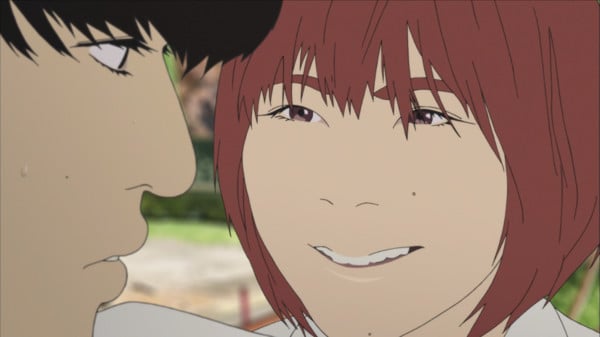
From Mushi-Shi to Flowers of Evil, many of your works speak to the darkness that hides in the plain sight of our everyday lives. Is this a sensibility you've inherited from working with Ikuhara-san on Utena, or has it been a thread you've always been interested in pulling on?
NAGAHAMA: It might not be something that came from within me, but it was present in the manga. We continued the task of extracting those themes into a concentrated form. So, it might give off that appearance to the viewer. During Utena, I extracted everything heavy and murky out of Ikuhara. I think I continued to carry out that task in the same vein for subsequent works such as Flowers of Evil and Mushi-Shi.
As someone who enjoys Flowers of Evil's visuals, I was wondering if there was a moment that made you and the team go, “Oh man, this works! And it looks great!” I'd imagine there was a bit of hesitancy surrounding the show's rotoscoped look before, during, and after the initial live-action filming.
NAGAHAMA: I believe we felt that we'd gotten the show's rotoscope concert right while at the very first staff screening. Until then, I don't think we had a real grasp of how the visuals would be received by the average viewer. If I had a time machine and the chance to revise my choices, I'd visit myself and say, “Don't you dare do this show in rotoscope.” [chuckles] But, I am extremely fond of Flowers of Evil.
It's an amazing show.
NAGAHAMA: Thank you so much.
What was your reaction the first time you saw Nakamura's smile? I have to say, it's probably the scariest smile I've seen in any anime series.
NAGAHAMA: For those of us in production, we were extremely partial to Nakamura. We all thought that Nakamura was a poor kid whom we needed to give our love to. But there was one big incident that I believed separated us from the viewers. There's one particular scene that all of us on production thought was hilarious. It's the exact scene that viewers found extremely disturbing. In a way, I think we were all resonating with and turning into Nakamura... We were all Nakamura.
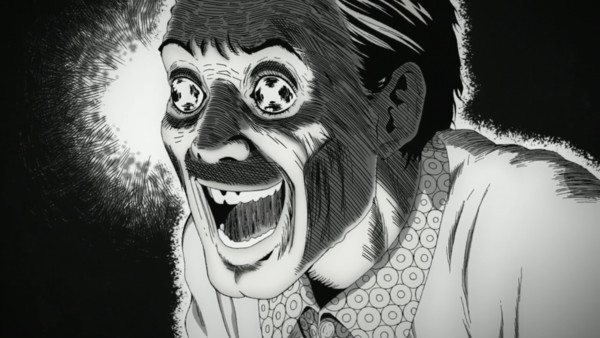
If you feel comfortable with it, may I ask you one question about Uzumaki?
NAGAHAMA: Yes.
What was a major takeaway you had from the production of Uzumaki? Are there any techniques you developed in your episode that you're looking forward to using again in future projects?
NAGAHAMA: I think this was an opportunity to learn a lot about things that require more preparation and attention, rather than technical things. For example, in a normal anime production, you start with a script, then go on to storyboards and character design. Then you go through layout, animation, art, coloring, shooting (composite), dubbing, and finally, dubbing. But in Uzumaki, there were many scenes that could not be handled with such a procedure. The production started with a script, then storyboards and dubbing, then motion capture and layout. After dubbing, we finished the drawing, coloring, and art, and finally did compositing (shooting). It was very difficult to share my vision of Uzumaki with the audience. That said, I don't intend to give up the method I used. If I have the opportunity, I would like to try this method again.
Knowing that you're a huge fan of superheroes and American comic books, did you ever feel like you had to hold yourself back a little bit while working with Stan Lee and his associates on The Reflection?
NAGAHAMA: I never held myself back in front of Stan Lee. I just started gesturing a punch in front of him, and I think my hands were in this configuration [poses].
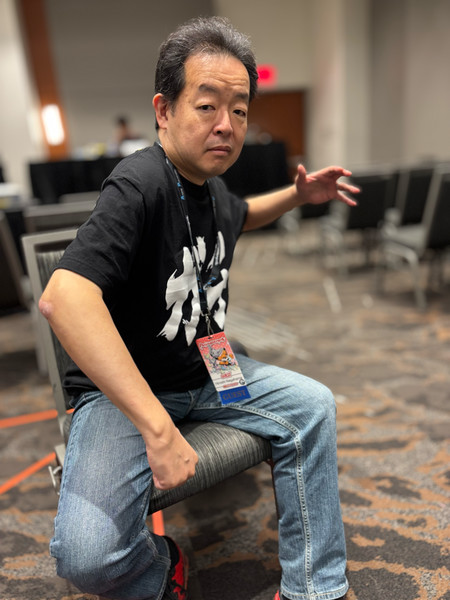 |
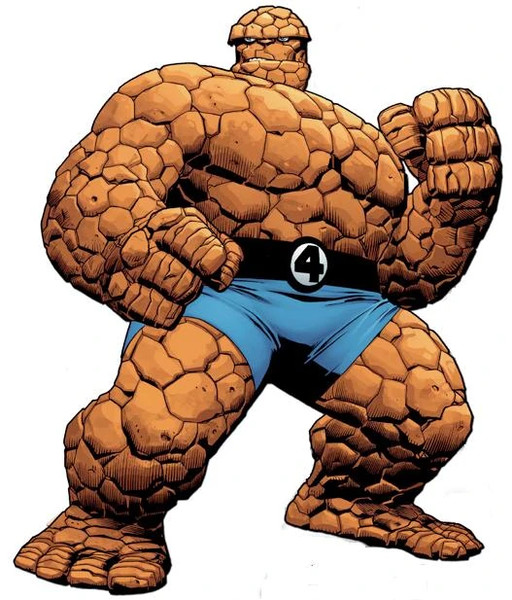 © MARVEL |
You look so cool!
NAGAHAMA: “It's the Thing! Ben Grimm!” He'd recognized my reference, and we had a good laugh right away. I think the less I held myself back, completely letting myself loose in front of Stan, the more he understood where we stood and our relationship became closer.
Are there any recent comic book series that you've been enjoying? The last few years of X-Men, especially Jonathan Hickman's run, have been super interesting.
NAGAHAMA: I haven't had the chance to read it. I tend to be a bit more interested in the older works I've skipped over. Orion from DC, Mister Miracle, I'm most attracted to the legacy of Jack Kirby. There's another title that I had just on the tip of my tongue, but I can't think of it. There's a particular scene from Alan Moore's Swamp Thing that comes to mind, but that's not new at all.
As you showed off at your panel, I know you love to load up on superhero figures whenever you're in the States. Are there any particular figures you're hunting for while you're here? Perhaps the latest Marvel Legends Maximum Series Spider-Man or the new Spider-Man 2 [PlayStation 5 Game] Venom that just came out?
NAGAHAMA: Super Powers from McFarlane. But unlike the Kenner figures from the '80s, the McFarlane series isn't that great. Since we know that the DC property is going to Mattel next year, I'm resolved to put up with McFarlane until the end. I'm hoping that Super Powers will be revived at Mattel.
You'll need those James Gunn Superman figures.
NAGAHAMA: I want to get the figures and see the movie soon!
Finally, what's next for you, and what would you like to say to the fans who've been following your career for all these years?
NAGAHAMA: “What's next for me?” It's something I must not allow myself to disclose yet. Right now, I'm deep in the middle of research on one of my future projects. Another project I have going on is something I've been moving along with for my entire life. And one other project has been far out of reach for me, but I'm trying to get closer to it. So, I have all three of these moving at the same time, and there's one thing I have to keep telling myself: make sure that all three of these lines do not entangle and confound each other. Should any entanglement happen, I know that I'll need to cut one of these projects.
I need to spread these projects out, carefully making sure that the themes, announcement times, and the media will be completely different for all three. I'm not very adept, so if I worked on similar shows at the same time, they'd all become entangled. I always have this desire to work on multiple projects at once. The solution I've mentally reached is to separate the projects in every possible way. Understand that when there's an announcement for one of my projects in the future, you'll see that it's one of the three I mentioned here.
Special Thanks to the Animazement staff for facilitating this interview and Mr. Karahashi for his linguistic expertise.
discuss this in the forum (1 post) |